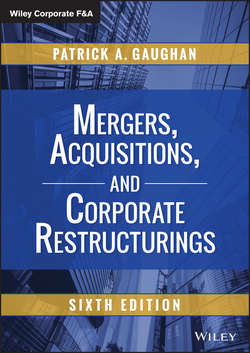Читать книгу Mergers, Acquisitions, and Corporate Restructurings - Gaughan Patrick А. - Страница 6
На сайте Литреса книга снята с продажи.
Part I
Background
Chapter 1
Introduction
Terminology
ОглавлениеA merger differs from a consolidation, which is a business combination whereby two or more companies join to form an entirely new company. All of the combining companies are dissolved and only the new entity continues to operate. One classic example of a consolidation occurred in 1986 when the computer manufacturers Burroughs and Sperry combined to form Unisys. A more recent example of a consolidation occurred in 2014 when Kinder Morgan consolidated its large oil and gas empire. It had Kinder Morgan, Inc., acquire Kinder Morgan Energy Part LP, Kinder Morgan Management LLC, and El Paso Pipeline Partners LP. The acquired entities were master limited partnerships that provided certain tax benefits but that limited the ability of the overall business to grow and do larger M&As.
Table 1.4 Top 5 Central American M&A by Value of Transaction, Top 5 South American M&A by Value of Transaction
Source: Thomson Financial Securities Data, February 19, 2015.
In a consolidation, the original companies cease to exist and their stockholders become stockholders in the new company. One way to look at the differences between a merger and a consolidation is that with a merger, A + B = A, where company B is merged into company A. In a consolidation, A + B = C, where C is an entirely new company. Despite the differences between them, the terms merger and consolidation, as is true of many of the terms in the M&A field, are sometimes used interchangeably. In general, when the combining firms are approximately the same size, the term consolidation applies; when the two firms differ significantly in size, merger is the more appropriate term. In practice, however, this distinction is often blurred, with the term merger being broadly applied to combinations that involve firms of both different and similar sizes.
